The best phone 2024: top smartphones in the US right now
We rank the best phones from Samsung, Apple, Google and more

• The list in brief
1. Best iPhone for most people
2. Best premium iPhone
3. Best Android for most people
4. Best premium Android
5. Best camera
6. Best battery
7. Best tablet foldable
8. Best flip foldable
9. Best budget
10. Best AI
11. Best gaming
12. Best looking
• FAQs
• How we test
The best phone you can buy might be an Apple iPhone or an Android phone from Samsung, Google, or OnePlus, but you can't go wrong with any phone on this list. We've spent quality time reviewing each one of these phone, putting it through the paces in our Future Labs testing, and we've come up with the best phone you can buy for any situation.
Most people want a phone that is capable, packed with features, and also affordable, but if you want to splurge on a premium phone that goes a bit further, we have premium selections from the iPhone and Android camps as well.
We also offer the phone with the best battery life, the best cameras, the best gaming performance, and the best value for the money. No matter what you need, we've seen every phone around, and we've ranked the best.
If you want to dive deeper among the many options below, check out our brand-specific rankings instead. We’ve reviewed all the latest handsets, and detailed the best iPhones, best Samsung phones, and best Google Pixel phones elsewhere on TechRadar.
Quick List

A superfast A16 Bionic chipset, USB-C port, 48MP main camera and the Dynamic Island ensure that, for the first time in a long while, Apple’s latest standard iPhone offers cracking value for money.
Read more below
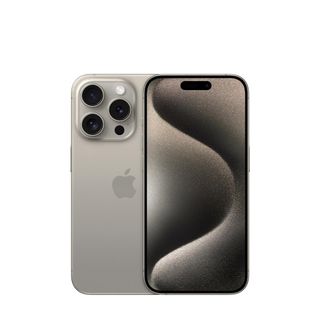
If you want a big iPhone and can meet the hefty asking price, then the iPhone 15 Pro Max’s A17 Pro chipset, titanium design and 5x periscope zoom lens make it the best overall choice.
Read more below
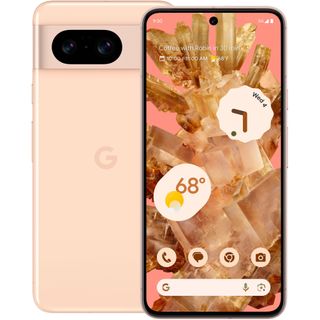
The Pixel 8 is a solid, uncomplicated Android with a fantastic set of cameras and amazing AI features that have gotten even better since the phone launched. With seven years of Android updates, this is the right Android phone for most people.
Read more below
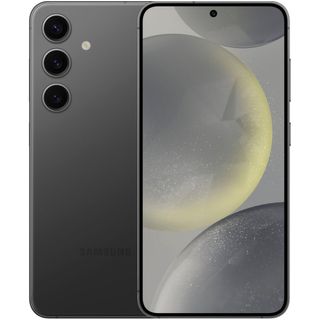
The Galaxy S24 Plus gives you all of Samsung's best premium Android features without going too far. Unless you need a pen, the S24 Plus has a huge display and superb cameras, making it the right premium Android choice.
Read more below
Load the next three products...
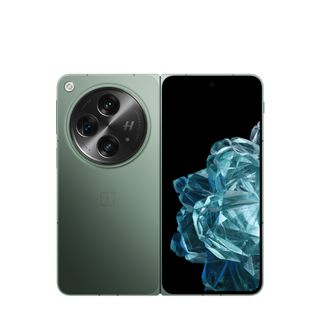
The OnePlus Open boasts a superior design, display, and set of cameras to its main competitors from Google and Samsung, making it the best foldable phone available today.
Read more below
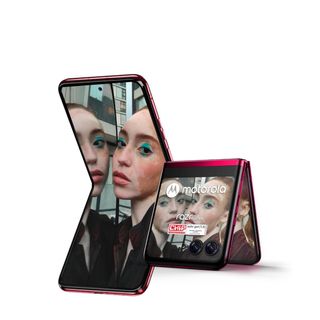
The Motorola Razr Plus is a flip phone foldable triumph. It's so far ahead of what other clamshell phones offer that there's barely a flaw that isn’t forgivable.
Read more below
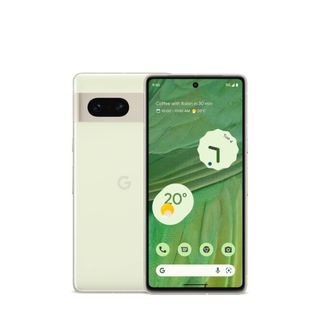
The Pixel 7 offers so much in terms of performance, durability, and camera power for such a low price that we have to recommend it, but Google just launched a new Pixel 8a, so check back to see if the new Pixel makes our list.
Read more below
Load the next three products...
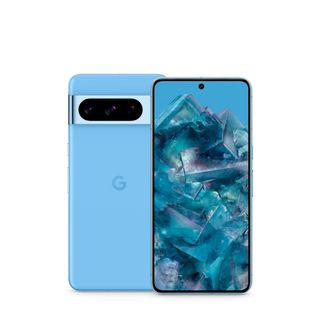
The Google Pixel 8 Pro is more phone than Google has ever given us. It has the best cameras ever on a Pixel, but it's the machine learning features like a call screener and magic photo editor that set this phone apart.
Read more below
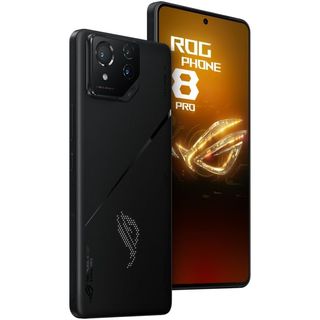
Asus subdued the gamer looks on the ROG Phone 8 Pro but it didn't subdue the power. This is the best gaming phone you can buy, with the highest framerates and the most features aimed at keeping gamers playing and sharing high scores.
Read more below
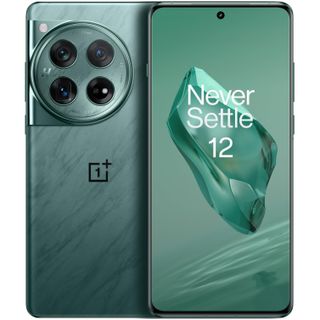
The OnePlus 12 will go down as one of the coolest looking phones ever, with a unique marble finish or sparkling black, an iconic camera bump, and a textured feel all around. It also performs well, so if you want to stand out, go for this one.
Read more below
The best phone in 2024
Why you can trust TechRadar
Below, you'll find full write-ups for each of the best phones in our list. We've tested each model extensively, so you can be sure that our recommendations can be trusted.
The best iPhone for most people
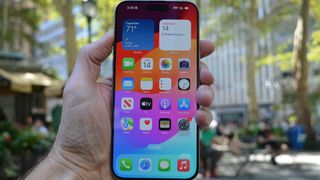
Specifications
Reasons to buy
Reasons to avoid
✅ You want an affordable iPhone: The iPhone 15 strikes a nice balance between price and cutting-edge features, so you don't feel like you're missing out.
✅ You want a camera upgrade: Between the new 48MP main camera and some excellent portrait photography capabilities, the iPhone 15 offers strong camera specs for the price.
❌ You want a bigger phone: The iPhone 15's 6.1-inch screen might feel cramped if you currently own a Pro Max or Plus.
❌ You want bigger zoom: The 2x optical zoom on offer here doesn't quite compare to 3x optical zoom on the iPhone 14 Pro, iPhone 15 Pro or Samsung Galaxy S23.
📱 If you're not bothered by titanium sides, 120Hz scrolling or high-spec zoom photography, then the standard iPhone 15 offers pretty much everything you could want from a flagship phone, but for significantly less money. ★★★★½
Apple's iPhone 15 marks the most significant step up for a base iPhone in several years, earning its place as the best value phone money can buy today.
Design: The iPhone 15 does what the iPhone 14 did not: it moves the base model forward with a refreshed chassis design, a brand-new (and eye-catching) rear glass panel, and a compatibility-improving USB-C port.
Display: The iPhone 15's 6.1-inch Super XDR OLED display is bright and responsive, however, as on the iPhone 14, its refresh rate is locked to 60Hz. You do get Apple's Dynamic Island this time around, though.
Camera: There are still just two lenses on the back of the iPhone 15, but one of them is vastly improved over the iPhone 14. The 12MP ultrawide is basically the same, but the main camera is now the same 48MP lens that you'll find on the excellent iPhone 14 Pro (and indeed the iPhone 15 Pro).
Performance: The iPhone 15 uses the iPhone 14 Pro's superfast A16 Bionic chipset, which should provide more than enough power for most iPhone owners (for context, the latter was the most powerful handset of 2022).
Battery life: The iPhone 15 is rated for 20 hours of video playback, 80 hours of audio-only, and a 50% recharge in 30 minutes with the optional 20W charger. In our testing, we were able to use the phone casually for a full day.
Value for money: In recent years, Apple's standard models have felt like minor upgrades that pale in comparison to their respective Pro-level counterparts, but the iPhone 15 bucks that trend by being a genuinely great value product.
Read our full iPhone 15 review
| Attributes | Notes | Rating |
|---|---|---|
| Price | Apple is finally giving you more for you money. | ★★★★☆ |
| Design | The curved edges and smooth, color-infused glass make this a most modern iPhone. | ★★★★☆ |
| Display | Losing the notch and gaining the dynamic Island is a net poisitive, as is the lovely and now brighter screen. | ★★★★☆ |
| Camera | A big main camera leap is paired with some truly impressive computational photography. | ★★★★☆ |
| Performance | It's hard to ask for more than the A16 Bionic, unless you need the very best of the best. | ★★★★☆ |
| Battery life | Decidedly battery life. | ★★★★☆ |
The best premium iPhone

Specifications
Reasons to buy
Reasons to avoid
✅ You want the biggest and best iPhone: The iPhone 15 Pro Max is the most technologically advanced iPhone Apple has ever made, period.
✅ You want the most powerful phone: Apple's A17 Pro chipset is more powerful than anything else on the market, so much so that you're able to play console-quality games on the iPhone 15 Pro Max.
✅ You want a versatile camera system: In addition to its 5x optical zoom capabilities, the iPhone 15 Pro Max features the smartest portrait photography tech around.
❌ You want the best mobile zoom camera: The addition of 5x optical zoom on the iPhone 15 Pro Max is welcome, but the 5x camera on the Galaxy S24 Ultra is arguably better.
❌ You need fast charging: The iPhone 15 Pro Max offers reassuringly-solid battery life and functionally-fine charging, but rivals from every angle offer much faster speeds.
📱 When it comes to iPhones, the iPhone 15 Pro Max is the best of the best. But you'll have to pay handsomely for the privilege of owning one, and Samsung's similarly priced Galaxy S24 Ultra has slightly better cameras. ★★★★½
The iPhone 15 Pro Max is indisputably the best iPhone money can buy right now, so for Apple fans with a bottomless supply of cash, this is the top choice. The smaller iPhone 15 Pro is also an exceptional handset that's worth considering if you prefer its more practical 6.1-inch size, but since the larger iPhone 15 Pro Max offers a 5x periscope zoom lens, the latter phone is the objectively superior device.
Design: As with its smaller sibling, the iPhone 15 Pro boasts a gorgeous titanium design that can withstand unwelcome drops more effectively than its predecessor. The addition of a USB-C port and configurable Action button makes this a more versatile device, too.
Display: The iPhone 15 Pro Max packs an excellent 6.7-inch Super XDR OLED screen (with ProMotion), which is unchanged from the iPhone 14 Pro Max.
Camera: In addition to that aforementioned 5x periscope zoom lens – which marks the first of its kind on an iPhone – the iPhone 15 Pro Max boasts a 48MP quad-pixel main lens and a 12MP ultra-wide lens, making it the most capable and versatile iPhone yet for mobile photographers.
Performance: Apple's all-new A17 Pro chipset delivers mobile gaming performance that's comparable to some high-end PCs (yes, really). Along with the iPhone 15 Pro, the iPhone 15 Pro Max is the most powerful phone on the market.
Battery life: The iPhone 15 Pro Max managed 28 hours of mixed-use in our testing, with the phone recharging to 50% in just over 30 minutes. That's pretty good going for a phone of this size and power, but others charge faster.
Value for money: As with the Samsung Galaxy S24 Ultra, the iPhone 15 Pro Max is an exceptionally expensive handset that can never truly be considered good value for money. That said, you're still getting a whole lot of phone for the price.
Read our full iPhone 15 Pro Max review
| Attributes | Notes | Rating |
|---|---|---|
| Price | More expensive, but you do get more storage for your money. | ★★★☆☆ |
| Design | The combination of a titanium body and new smoother curves is an aesthetic and ergonomic win. | ★★★★☆ |
| Display | The screen in bigger (though not higher resolution) and looks better than ever. | ★★★★★ |
| Camera | This is the best collection of cameras we've ever used on an iPhone. | ★★★★★ |
| Performance | The A17 Pro makes console gaming a reality in an iPhone. | ★★★★★ |
| Battery life | All-day battery life but still waiting for fast charging. | ★★★★☆ |
The best Android for most people
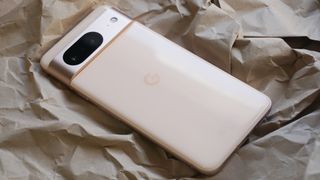
3. Google Pixel 8
Our expert review:
Specifications
Reasons to buy
Reasons to avoid
✅ You want Google's version of Android: The Google Pixel 8 will get Pixel Feature drops, and hopefully the latest Android, before other phones.
✅ You want a compact camera phone: The Pixel 8 is a great size for pockets, and it also has fantastic cameras for a phone this size, making it a pocketable companion.
✅ You'll have this phone a while: The Pixel 8 gets seven years of Android OS updates, and that's huge, so if you plan on holding onto your phone a while, this one will last longer.
❌ You need the best battery: We only got about six hours of constant screen time with the Pixel 8, so if you need longevity look elsewhere.
❌ Telephoto zoom is important: We liked the basic cameras on the Pixel 8, but if you're shooting photos of kids on a far away field or national monuments, get a phone with zoom.
📱 With solid cameras and AI features that keep getting better, the Google Pixel 8 is an all-around winner for Android fans looking for a Google phone that will last. ★★★★
The Pixel 8 is a great phone for Android fans who want the best of what Google's mobile OS has to offer today and into the future. With a Tensor G3 inside, same as the Pixel 8 Pro, the Pixel 8 has the same promise of seven years of Android updates, and so far all of Google's best new AI features have come to Pixel 8 owners right on time.
Design: The Pixel 8 design may be getting long in the tooth, but I still think it stands out as one of the coolest-looking Android phones, and Google has really nailed the color options this year.
Display: The display is the standout feature on all the Pixel 8 family phones this year, and the Pixel 8 delivers Google's new 'Actua' screen with excellent brightness and great color, as well as a healthy 120Hz refresh rate.
Camera: Google doesn't just rely on AI for its photo features, it also packs great cameras into the Pixel 8, including a 50MP main camera with a wide aperture, great for low-light pics. After you're done shooting, Google Photos on the Pixel offers some of the easiest AI editing tools you'll find on a smarphone.
Performance: While Google Tensor chips don't have the raw power of Apple silicon or Qualcomm Snapdragon processors, Google has enough confidence in the Tensor G3 and its AI capabilities that it's promised seven years of software updates, and so far it's delivered the best features to the Pixel 8 first.
Battery life: Battery life could certainly be better, especially if you're using the AI features continually. If you need a lot more battery life, your best bet is to buy a bigger phone.
Value for money: The Pixel 8 starts at a nice price for the advanced AI features and sharp photography skills. The seven years of updates could prove great for resale value in the long-run. Watch for Amazon to put this phone on sale often.
Read our full Google Pixel 8 review
| Attributes | Notes | Rating |
|---|---|---|
| Value | While pricier than its predecessor, the long-term software support makes this a great-value buy. | 4 / 5 |
| Design | More rounding across the range and smaller screen than the 7 make this a pocketable delight. | 4 / 5 |
| Display | Finally reaching a 120Hz refresh rate, this is a nice, bright all-round Full HD+ OLED. | 4 / 5 |
| Software | Android 14 adds a customizable lock screen, and the Pixel boasts an impressive seven years of OS and security updates. | 5 / 5 |
| Camera | There's no telephoto sensor, but the cameras that are present are powerful and impressive. | 4.5 / 5 |
| Performance | The new Tensor G3 chip enables a lot of great AI-enhanced experiences. | 4 / 5 |
| Battery | Perfectly adequate all-day battery life and charging but room for improvement. | 4 / 5 |
The best premium Android phone

4. Samsung Galaxy S24 Plus
Our expert review:
Specifications
Reasons to buy
Reasons to avoid
✅ You want superior performance: The Galaxy S24 Plus gives you the same performance as the Ultra, with all the Galaxy AI features, for less.
✅ You want a bigger, better screen: The Galaxy S24 Plus is a nice upgrade over the Galaxy S24, with a better display that gives you more space, and more battery beneath.
✅ You want the best battery life: On a premium smartphone, you won't find better battery life than we got on the Galaxy S24 Plus.
❌ You want the superior cameras: The camera is the biggest difference between the Galaxy S24 Plus and its more expensive S24 Ultra sibling.
❌ You like simple software: Samsung's OneUI software is a convoluted mess, and it's much more difficult to use than the iPhone's iOS and Google's Pixel 8 Android.
📱 The Galaxy S24 Plus is super-fast with extra-long battery life and a huge, bright display. You don't need more in a premium Android phone. ★★★★½
The Galaxy S24 Plus is the Samsung Galaxy phone that gives you everything without giving you too much. It has all the power and Galaxy AI features of Samsung's most expensive Ultra model, but it won't break the bank or give you options you'll never use, like a hidden pen.
Design: With a bigger display, the Galaxy S24 Plus sits in the middle of the Galaxy S24 family, borrowing from each side of price divide. The Galaxy S24 Plus looks more like the Galaxy S24 than the Ultra, and that's too bad because the Ultra has a slick titanium frame that we enjoyed in our review.
Display: Instead of just giving the Galaxy S24 Plus a bigger screen with the same resoution as the Galaxy S24, this year's Plus model has a much sharper display with more pixels, closer to the Ultra, making it a better choice than ever before.
Camera: Samsung offers plenty of shooting options with three lenses on the back of the Galaxy S24 Plus, including a real 3X optical zoom lens. If you need a lot more, the Ultra gives you astronomically more zoom, but the Galaxy S24 Plus has great shooting modes, plus new AI editing features in the Gallery app.
Performance: The Galaxy S24 Plus delivers stunning performance with its Snapdragon 8 Gen 3 chipset. In some benchmarks, the Snapdragon even beat the latest iPhone 15 Pro Max, so this Galaxy will handle all of your gaming, productivity, and multi-tasking needs with no trouble at all.
Battery life: A big reason we love the Galaxy S24 Plus is its superlative battery life, some of the best longevity we've seen from any premium smartphone we've tested. With a bigger display and a bigger battery beneath, the Galaxy S24 Plus proves once again why it's the right premium Android pick.
Value for money: The Galaxy S24 Plus starts around the same price as the iPhone 15 Pro, but here's a secret: Samsung phones often go on sale. We've already seen price cuts on this phone up to 20% off in the US, and we expect more sales as the next Unpacked event approaches.
Read our full Samsung Galaxy S24 Plus review
| Attributes | Notes | Rating |
|---|---|---|
| Value | The Galaxy S24 Plus is significantly cheaper than the Galaxy S24 Ultra, but it's still a mightily expensive phone. | 4 / 5 |
| Design | The phone's slim bezels and flatter sides look great, but the lack of Gorilla Armor glass is dissapointing. | 3 / 5 |
| Display | The Galaxy S24 Plus' display is big, bright, outdoor-friendly and as good as the Galaxy S24 Ultra's. | 5 / 5 |
| Software | Samsung's Galaxy AI features are welcome addition, but they don't do enough to mitigate OneUI's dizzying complexity. | 3 / 5 |
| Cameras | The Galaxy S24 Plus' camera array is objectively solid, but some hardware upgrades are long overdue. | 3 / 5 |
| Performance | Despite the region-based chipset discrepancy, the Galaxy S24 Plus is a phenomenally powerful phone. | 5 / 5 |
| Battery | The phone's class-leading battery life and speedy charging make it a battery champion. | 5 / 5 |
The best camera phone

5. Samsung Galaxy S24 Ultra
Our expert review:
Specifications
Reasons to buy
Reasons to avoid
✅ You want more than just a smartphone: The Galaxy S24 Ultra gives you more than any other smartphone. It can act as a laptop replacement, a drawing tablet, and an entire camera bag.
✅ You want to feel the future: The Galaxy AI features can sometimes feel magical, especially if you use the language translation and some of the better summary features. There are definitely more AI features to come, so this phone could get better with time.
❌ You don't need all of that phone: If you don't need everything and more, you can spend less and still get a great phone. It just won't be Ultra.
❌ You prefer elegance and simplicity: The Samsung software is really showing its age, especially against newer and simpler phones like the elegant iPhone 15 Pro running iOS 17, which is sociable and fun, not confusing.
📱 The Galaxy S24 Ultra takes smartphone features to the extreme. You won't find a more capable, adaptable, and clever device for any price, but that price is mighty steep. If you don't need everything, you can keep reading, but if you want the best phone, the best cameras, and the best overall, the Galaxy S24 Ultra is the phone to beat. ★★★★½
Samsung's Galaxy S24 Ultra takes smartphone features to the extreme, then keeps going. It's a top-performing phone, the best phone you can buy overall in so many ways. It has better battery life and performance than the iPhone, more versatile cameras than any other Android, and it packs features we don't see in smartphones these days, like the Samsung DeX desktop environment.
Design: The differences between the Galaxy S24 Ultra and last year's phone are subtle but significant. The S24 Ultra is a big slab of phone, now more flat than before, and that makes it easier to see in bright light and easier to use, especially with the S Pen. Unfortunately, it's still a gigantic device, and titanium didn't help Samsung shed weight.
Display: You won't find a better all-around display on a smartphone than the bright OLED screen on the Galaxy S24 Ultra. You can find a bit brighter, a bit faster, but the anti-glare finish helps in bright light, and Samsung's display is colorful and sharp for every task.
Camera: Samsung has done more work behind the scenes on its Galaxy S24 Ultra cameras than on the spec sheet, and the results pay off with better images in every setting. Portrait and landscape photos are much better, but even zoom shots have been improved, though we do miss that extra 10X zoom.
Performance: If you need the fastest phone, this is the one to buy. In our benchmark tests and real world gaming and photo editing, the Galaxy S24 Ultra was the fastest phone we've ever used, even beating the iPhone 15 Pro, which is a first for Android phones since Apple starting baking its own chipsets.
Battery life: You can easily use the Galaxy S24 Ultra for two days of normal use, and it lasted through a full day of intense usage with no trouble. The battery hasn't gotten any bigger, Samsung is just better at managing power on this phone than ever before.
Value for money: The Galaxy S24 Ultra is more expensive than last year, and you don't get a lot more for the money, but what you get is a big deal. Samsung promises seven years of software updates, including major Android OS updates, and that makes this phone a better value than any Samsung Galaxy Ultra to come before.
Read our full Galaxy S24 Ultra review
| Attributes | Notes | Rating |
|---|---|---|
| Price | Even more than last year, with fewer deals to find, but you get the best when you pay for it. | ★★★☆☆ |
| Design | It looks like last year, but the screen is flat which makes it less reflective, but also sharper. Just as heavy, even with titanium. | ★★★★☆ |
| Display | You won't find a better display on a smartphone worth buying, and the anti-glare finish really helps outdoors. | ★★★★★ |
| Camera | Better camera performance all around, even if the spec sheet looks a bit suspicious. Still the best, most versatile camera system. | ★★★★★ |
| Performance | Performance that can top an iPhone 15 Pro, for the first time in recent memory putting Android ahead of Apple. | ★★★★★ |
| Battery life | Better power management this year means the Galaxy S24 Ultra has some of the best battery life we've ever seen on a smartphone. | ★★★★★ |
The best battery life
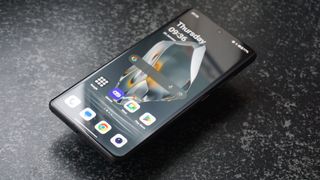
6. OnePlus 12R
Our expert review:
Specifications
Reasons to buy
Reasons to avoid
✅ You watch and play: With great performance, a dazzling display, and long battery life, this is a phone that's great for gamers and folks who binge-watch shows.
✅ You miss curvy phones: Samsung phones and iPhones have gotten a bit flat, but the OnePlus 12R has a curved display and an elegantly curved design.
✅ You want long battery life: Let's cut to the chase, this phone lasts a long time, and that's one of the best reasons to buy it. That huge battery lasts and lasts.
❌ You need the best camera: The main camera is great, but those other cameras have tiny little sensors that don't produce images that you'll want to share.
❌ You need to get wet: The OnePlus 12R is sadly not IP67 rated for water resistance, unlike many other phones in this price range. If you need durability, look somewhere else.
📱 The OnePlus 12R brings the OnePlus bargain phone formula to more markets, and folks looking for the best battery life on a phone that performs as well as many premium flagships should stop looking. It doesn't have the best camera options, and it's not the most durable, but it delivers performance with style. ★★★★
The OnePlus 12R is the bargain phone version of a great phone that was already a good bargain. For an even lower price, the OnePlus 12R gives you a bigger battery than the OnePlus 12, but you lose out on many of the best camera features. It's still a great choice.
Design: We like the stylish looks and even the round camera bump on the recent OnePlus models, and the OnePlus 12R looks snazzy and comes in a nice blue color, in addition to grey and violet. Unfortunately, OnePlus hasn't gotten the message that water resistance is very important, so this phone can only handle a light rain, not a serious dunk.
Display: The OnePlus 12R has a remarkable display that is big, bright, and colorful. It's incredibly bright, in fact, with a standard 1,600 nits of brightness normally, but under very specific conditions portions of the display can peak up to 4,500 nits, which is beyond dangerous for eyeballs. Still, you get the point, it's very bright.
Camera: The big 50MP main camera is nice, but the other two cameras, an 8MP ultra wide and a laughable 2MP 'macro' camera, are forgettable. That's fine, stick with the main lens and you'll take good shots, but don't expect to win any competitions.
Performance: OnePlus didn't skimp on the processor, and the OnePlus 12R gets the Snapdragon 8 Gen 2, the best Snapdragon we saw for most of 2023. Performance was great, whether playing games or ... ok, we mostly played a lot of games. It's a really nice screen for games.
Battery life: With a big 5,500 mAh battery inside, the OnePlus 12R delivers the best battery life of any premium smartphone we've tested. It edged out the Galaxy S24 Plus by an hour in our rundown tests, and beat the iPhone 15 Pro Max by more than four hours of active time. If you need longevity, this is a great choice.
Value for money: With a low price of $499.99 / £649 at launch, the OnePlus 12R could have easily been our pick for the best bargain phone, but instead our best battery life pick is also a great bargain. It delivers top-notch performance, the only real sacrifice is durability.
Read our full OnePlus 12R review
| Attributes | Notes | Rating |
|---|---|---|
| Value | So long as you're happy with the OnePlus 12R's weaknesses, there's a lot of great smartphone for your money here. | 4 / 5 |
| Design | Beautiful fit and finish hides lackluster ingress protection against dust and water. | 3.5 / 5 |
| Display | A superb display, that's stunning, bright, power efficient and smart. As long as you're happy with the size and resolution, there's little wrong here. | 5 / 5 |
| Software | OxygenOS 14 on the 12R is full of features without feeling overwhelming. The phone's long-term update roadmap is behind the curve, though. | 4 / 5 |
| Camera | A superb main 50MP snapper should cover you for most things, but the secondary cameras don't justify their presence on the 12R, especially that macro snapper. | 3.5 / 5 |
| Performance | Last year's flagship silicon still packs plenty of punch, supported by OnePlus' efforts with the Trinity Engine. Thermals could be better, despite the company's claims, though. | 4 / 5 |
| Battery | A big battery that results in the brand's best longevity to date in our tests. No wireless charging is the only misstep here. | 4.5 / 5 |
The best tablet foldable
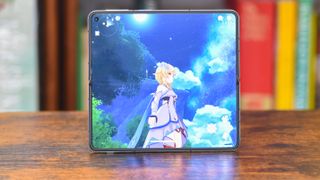
Specifications
Reasons to buy
Reasons to avoid
✅ You're ready to try a foldable phone: Excellent design choices make this the only tablet foldable worth considering. It feels like a normal phone when closed, unlike the Galaxy and Pixel Folds.
✅ You want quality photography: The Open boasts the best cameras on any foldable phone, putting it on a par with the best camera phones. It can’t beat the iPhone 15 Pro Max at everything, but it wins a few rounds.
✅ You want an imposing display: This phone has truly brilliant displays all around; it's brighter than almost any other phone you can buy, with a nearly-invisible crease.
❌ You're on a budget: At £1,599, this is one of the most expensive Android phones on the market. At the very least, look for deals before you buy.
❌ You want a sleek and slim phone: The thickness of the OnePlus Open, especially at its big camera bump, is the foldable’s biggest shortcoming versus the best flat phones.
📱 The OnePlus Open is the only big foldable phone that doesn’t feel like a compromise. It looks and feels like a normal phone, and the camera is the best you'll find on any foldable. There are some missteps – the performance and battery life could stand some improvement – but the Open is better than the rest, and the best part is that it costs a lot less (although you'll still pay handsomely for the privilege of owning one). ★★★★½
The OnePlus Open is the newest phone on this list, and we consider it to be among the best foldable phones (if not the best foldable phone) money can buy right now. Sure, the Samsung Galaxy Z Fold 5 offers myriad more special features, and the Google Pixel Fold utilizes the power of Android in a way that only Google-made phones can, but in almost every other department, the OnePlus Open is the best there is.
Design: For us, this the first tablet foldable phone that simply feels right. All the ‘Folds’ that came before feel wrong being too narrow or squat. The Open, however, hits the design sweet spot, and it's the most important improvement OnePlus could have made to the foldable form factor. If you’re paying twice as much for a phone, you shouldn’t feel like it’s the wrong size half the time.
Display: The two displays on the OnePlus Open are a marvel to behold, and both of them are just as good as the flagship phone or tablet they’ll replace in your collection. The cover display is 6.3 inches, with LTPO 3.0 technology that can slow down to 10Hz for a low-power, always-on mode. The inner display is a huge 7.82-inch screen with a variable 1Hz to 120Hz refresh rate, which has almost the same screen area as an iPad Mini (2021).
Camera: On every other foldable phone, the size limitations of the fold-in-half design have resulted in cameras that range from inferior to downright awful. The OnePlus Open has the best cameras of the bunch, and comes close to being as good as the best flat camera phones, closer than any foldable we've used so far.
Performance: The OnePlus Open uses Qualcomm's Snapdragon 8 Gen 2 chipset, so it's as powerful as other flagship phones using that same processor, like the Samsung Galaxy S23 Ultra. Sure, faster chipsets now exist, but you'll have absolutely no trouble juggling multiple applications on this phone. Mind you, its gaming performance doesn't compare to the best Android phones on the market.
Battery life: The OnePlus Open can last you a full day, if you're judicious with your usage. With a two-cell design the Open has an overall battery capacity of 4,805mAh, which is some 200mAh below other foldables. But with some smart power management features, OnePlus can get sold battery life out of these cells without needing to make the phone bigger and bulkier.
Value for money: At $1,699, this is not a cheap phone, but that price is still some $100 less than the starting price of the Samsung Galaxy Z Fold 5 and Google Pixel Fold. What's more, OnePlus is offering a deal for the full life of the OnePlus Open that gives you at least $200 off if you trade in any phone.
Read our full OnePlus Open review
| Attributes | Notes | Rating |
|---|---|---|
| Price | It’s expensive, but it’s the cheapest tablet foldable, while still giving you more screen inside and out. | ★★★★★ |
| Design | Excellent design choices make this the only tablet foldable worth considering. It feels like a normal phone when closed, unlike the Galaxy and Pixel Folds. | ★★★★★ |
| Display | Brilliant displays all around, brighter than almost any other phone you can buy, with a nearly-invisible crease. | ★★★★★ |
| Camera | The best cameras on any foldable phone, and on a par with the best camera phones. Can’t beat the iPhone 15 Pro Max at everything, but it wins a few rounds. | ★★★★☆ |
| Performance | Solid performance to drive the two displays, but gaming isn't as impressive, as it can’t beat the base-model iPhone 15. | ★★★★☆ |
| Battery life | Good battery life and super-fast charging, but it could use a bit more power to last all day, every day. | ★★★☆☆ |
The best flip foldable

Specifications
Reasons to buy
Reasons to avoid
✅ You’ve been waiting for phones to get cool again: If you’ve been telling yourself “I’ll buy a new phone when there’s a reason to buy something new,” you now have that reason.
✅ You want a small phone but need a big screen: The Motorola Razr Plus is the thinnest flip phone when folded shut, and has the biggest display when open. It's bigger on the inside than the others, and you don’t need to be a Time Lord to appreciate the magic.
✅ You aren’t addicted to your iPhone: Seriously, what’s stopping you from buying a cool phone? Are you really addicted to blue bubbles and the Dynamic Island? Try something cooler, I promise you’ll like it.
❌ You need a great camera phone: The Motorola Razr Plus has forgivable flaws, but the cameras aren’t among them. They're pretty lousy for regular photos, although selfies benefit from using the main lens.
❌ You’re going to get it wet: The Moto Razr Plus is more dust resistant than other flip phones, but less water resistant than the Galaxy Z family devices, which can take a dunk.
❌ You want to totally unplug and hang up: Unlike other flip phones, the Razr Plus doesn’t go to sleep when you hang up. It’s often even more fun when it’s closed, but wait for the base model Razr if you appreciate the joy of tuning out.
📱 The Motorola Razr Plus / Razr 40 Ultra is a major evolutionary step for smartphones, going beyond what any previous flip or foldable has offered. With the screen open, it’s surprisingly thin, with a huge display. When it’s closed – and you start using apps on the external screen – you've got an entirely new device, different from anything you've used before. It's not perfect, but it’s so far ahead of what other phones offer that there's barely a flaw that isn’t forgivable. The Motorola Razr Plus is a winner – and if you want to get excited about phones again you need to check it out. ★★★★½
The Motorola Razr Plus (or the Razr 40 Ultra outside the US) is more than just the best foldable phone you can buy (as far as flip phones go); it’s an entirely new category of smartphone, offering more than any handset before it. With the phone shut, it's a compact miniature communicator, a pocket mirror, and a palm-sized map. This is the phone that finally justifies folding a display in half, and it makes you wonder when the rest of the best phone makers will catch up.
Design: When folded, the two halves of the phone smack together like pursed lips, with a gentle curve around the edges that still manages to cleave together in a sealed crease. Perhaps it's the Viva Magenta hue that adds to this impression. The Samsung Galaxy Z Flip 5, by comparison, seems boxy and square. The Razr Plus shows no visible gap when closed, unlike every competing flip phone that came before it.
Display: This is the first flip phone that isn’t paying lip service to the cover screen. This isn’t a screen that’s just for checking the weather or simple notifications, and neither is it there to just show cute animations. This is the real deal. You can run full apps on this display. That said, if the Motorola Razr Plus didn’t have the great external display it would still be a standout for its big folding internal screen
Camera: All around, this phone has all the hallmarks of a low-quality camera. In photos of flowers, the camera blew out red tones until the details were mostly gone. Taking photos in the woods, stems and leaves in the background were either unnaturally blurry or digitally oversharpened, with deep black lines dividing objects.
Performance: If all you care about are benchmark scores, the Motorola Razr Plus won’t be the phone to pick. Thankfully, real-world performance tells a different story than I expected from the specs, and even though this phone uses the same platform as last year (or perhaps because it does), it performs better than the previous Razr, and better than you'd expect.
Battery life: Motorola has done the best it could in fitting a large battery inside the thin folding shell of the Razr Plus. It's even managed to fit a larger battery into the folding frame than you’ll find in the iPhone 15 Pro, though Apple manages power slightly better. We couldn’t quite make it through a full day on a full charge with the Motorola Razr Plus, though that's probably because the phone was just so much fun to use.
Value for money: The Razr Plus is expensive, but it’s the first clamshell foldable phone that we’d recommend to anyone and everyone, not just people asking about flip phones, or folks who want the coolest new thing.
Read our full Motorola Razr Plus review
| Attributes | Notes | Rating |
|---|---|---|
| Price | Same price as last year’s model, with an extra half-screen more | ★★★★☆ |
| Design | Most refined and tight-fitting flip phone ever, with a game-changing external screen | ★★★★★ |
| Display | Big on the outside, bigger on the inside, and the external display is much more than an afterthought | ★★★★★ |
| Camera | Not the best cameras, but great design makes it easy to get unique shots that other phones can’t manage | ★★★☆☆ |
| Performance | Good enough to keep up with every task, but it could get warm when pushed with video recording or gaming | ★★★★☆ |
| Battery life | Battery life could be better, and using that external display (or both at once!) means using more power | ★★★★☆ |
The best budget phone
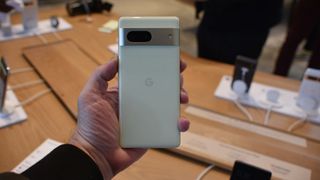
Specifications
Reasons to buy
Reasons to avoid
✅ You want a budget phone that stands out: Not everyone will love the camera bar, but Google has created something that's undeniably different to anything else on the market, and that's no easy task (without it also looking terrible). The Lemongrass finish is equally divisive, but if you want an eye-catching phone with substance, the Pixel 7 delivers.
✅ You're a creative mobile photographer: If you rely on your phone's camera for more than snapping pics of a fancy dinner or your receipts (it's good for those too), the Pixel 7 comes with some creative photo capture modes and editing features that allow for some amazing results; it also just takes great pictures.
✅ You like Google's assistive features: Whether you rely on accessibility, or just like the idea of being able to dictate to your phone, have it read content back to your and the like, the Pixel 7 has the feature set and hardware to make your life easier in lots of little ways, and it's set to get better over time.
❌ You want a compact phone: Sure, Google has slimmed down the bezels, but the Pixel 7 still feels like a sizeable phone (remember, it's a similar size to XL Pixel phones of old). The Pixel 7a may be a better option if you want a pocketable rocket.
❌ You shoot a lot of video: Google has improved the Pixel line's video quality, and Cinematic Blur is an ambitious new addition, but you'll still have to do a lot of work if you're looking to become the next Roger Deakins (Google him). Video is otherwise better year-on-year, but Samsung and Apple still have the edge here.
❌ You need a lot of storage: One of the most basic issues with the Pixel 7 is storage. The options of 128GB or 256GB aren't exaclty generous by today's standards when the phone's main rivals offer up to 512GB and beyond.
📱What the Pixel 7 offers – from its distinct design to its creative and capable camera and intelligent user experience – make it a great value-for-money flagship buy. The user experience feels polished, the AI-supported features are unique and competent, and the promise of more functionality via forthcoming 'feature drops' mean this Pixel is only likely to get better with time. ★★★★
While you might expect the Pixel 7a would be our budget phone pick, Google has given the Pixel 7 such good discounts throughout the past year that it is worth paying more, though you may not have to. Even though the Pixel 6a is still on sale at a great low price, for better durability, wireless charging, and much better photography, the Pixel 7 is worth spending just a bit more to buy.
Design: The Pixel 7 looks like the Pixel 6 and the Pixel 8, but there are different color options every year, and we like the lemongrass hue offered for this phone. The camera bar is metal and tinted depending on the color you buy, and it has a great look for a budget device. Plus, it is rated IP68 for water resistance, which is a huge improvement over the previous model.
Display: The Pixel 7 has a Full HD+ resolution and 20:9 aspect ratio, and it runs at up to 1000 nits in normal use, and can push to 1400 nits at its peak (25% brighter than that of the Pixel 6's display) for better visibility in bright surroundings.
Camera: With the Pixel 7 you're getting the same 50MP main camera as the Pixel 7 Pro, as well as a similar 12MP ultra-wide. You also get the same 10.8MP punch-hole selfie snapper, plus 4K video recording up to 60fps and support for 10-bit HDR video capture for better colors, brightness and contrast. But hardware is only one part of the puzzle here and it's the phones image processing and camera software that plays a big part of the Pixel photography experience.
Performance: The Pixel 7 doesn't have the raw power to match phones powered by Qualcomm's Snapdragon 8 Plus Gen 1 chip, such as the Samsung Galaxy S22 Ultra. However, the difference isn't likely to be all that significant in real-world use. All in all, while it may not have the raw horsepower of an iPhone or newer Galaxy, the Pixel 7 can hold its own, especially where AI tasks are concerned.
Battery life: The 4,355mAh battery in the Google Pixel 7 may sound large, but we wish it was bigger, especially as it's technically a capacity reduction compared to the 4,614mAh battery inside its predecessor. We had no trouble getting the phone to last all day, and ended most days at around 15%, with usage including streaming, gaming, and extended TikTok sessions.
Value for money: Don't buy this phone for the full suggested retail price. Google and Amazon both offer deals on this phone often, and you can buy it for less than $449 / £449 / AU$749 often. Amazon sold this phone for that price more than two months of the last year. Get the best deal on the best budget with a little patience.
Read our full Google Pixel 7 review
| Attributes | Notes | Rating |
|---|---|---|
| Price | Great functionality and nice hardware in a standout design at a good price. | ★★★★☆ |
| Design | An eye-catching design that's a subtle evolution on the Pixel 6 that can still turn heads. | ★★★★☆ |
| Display | 90Hz for a flagship is behind the curve but the screen looks great otherwise. | ★★★½☆ |
| Performance | The Tensor G2 chip does what it's meant to well, even if it doesn't compare to mainstream competition.. | ★★★★☆ |
| Cameras | No optical zoom, and some features need work, but it's hard to take bad photos with this phone. | ★★★★☆ |
| Battery life | Battery life lives up to Google's claims, but faster charging would have been nice. | ★★★½☆ |
The best AI phone
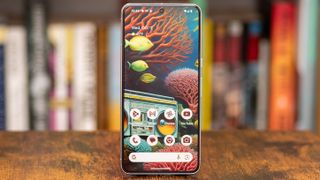
Specifications
Reasons to buy
Reasons to avoid
✅ You’ve taken a lot of bad photos and videos: The Pixel 8 Pro can fix whatever photos you have in your Google Photos library, even if you took them with a different phone in the past.
✅ You’re a die-hard Android fan forever and ever: Good news, Android fan, this phone will last longer than any other Android. If you want an Android that will get updates in 2030, this is the first.
✅ You want a receptionist to answer your calls: The call screening feature really works (if you can find it), and it gives you a quick, written transcript of what your caller wants before you decide to answer.
❌ Your friends all have iPhones: With iOS 17, Apple is making a compelling argument for sticking with the same phone everybody around you is buying.
❌ You want the absolute best cameras: While the Pixel 8 Pro is impressive, and the iPhone 15 Pro Max is a serious upgrade, nothing beats the Galaxy S24 Ultra for camera capabilities and quality.
❌ You are a journalist or reporter: The camera editing tools on the Google Pixel 8 Pro may create questions about credibility from the shots it makes, and the summary tool is factually inaccurate.
📱 The Google Pixel 8 Pro is the best Pixel that Google has ever made, and it represents Google’s vision for the future of mobile technology, though that vision does seem a bit clouded and unfocused at times. It has a fantastic display that’s bigger and brighter than its competitors at this price, and the photography features, bolstered by Google’s machine learning, are unmatched. ★★★★
The Pixel 8 Pro is Google’s most ambitious Pixel yet, with some serious camera upgrades that will satisfy even pro photogs, and a Tensor G3 chipset custom built to run Google’s machine learning features. Google is so confident in this phone’s performance that it is promising an unprecedented seven years of major updates, longer than any other phone maker supports its phones, currently.
Design: The Pixel 8 Pro is more rounded on the corners, and more flat on the display. This makes the phone easier to hold, while also giving you a better view of your content. The finish is lovely, and the colors are more classy and inviting than unusual and modern. This is the nicest Pixel phone Google has made so far, which is good because it has largely made the same phone three times now.
Display: The Pixel 8 Pro display is a standout feature this year, and Google has even endowed it with its own branding: Super Actua. The Pixel 8 Pro can reach 2,400 nits at peak brightness, and still pumps out 1,600 nits when you aren’t in direct sunlight. In almost every way, the Pixel 8 Pro display beats that of the iPhone 15 Pro Max.
Camera: Compared to the iPhone 15 Pro Max, some photos looked better when shot with the Pixel 8 Pro, but others, especially night pics and low-light images, looked better taken with the iPhone. That’s surprising, but there are still some reasons for Google to brag. Only the Pixel 8 Pro has Magic Editor, which combines generative AI with Google's Magic Eraser to fix and change images with a little too much ease.
Performance: In terms of raw performance, pushing games and graphics to new heights, the Pixel 8 Pro does just fine, but it won’t win any competitions. It handled all of my favorite games and ran high-resolution videos smoothly, but everything looked better on phones like the iPhone 15 Pro or Android phones like the Galaxy S24 Ultra.
Battery life: The Pixel 8 Pro had no trouble lasting through a full day of use. That should come as no surprise, since it has a larger battery than either the Samsung Galaxy S23 Plus or the Apple iPhone 15 Pro Max. Google really packed in the biggest cell it could fit, and you’ll need to buy a gaming phone to find bigger.
Value for money: Google can be liberal with discounts, especially around the sales season. More than with any other brand, I recommend waiting for a deal when you’re considering a Pixel phone, because as good as the phone is now, it feels like an even better buy for a few hundred dollars or pounds less.
Read our full Google Pixel 8 Pro review
| Attributes | Notes | Rating |
|---|---|---|
| Price | More expensive than last year, but still competitive compared to other Android phones, especially with longer software support. | ★★★★☆ |
| Design | The same old look, now refined with a matte finish and nicer colors. It’s the nicest Pixel yet, but the Pixel look is getting stale. | ★★★★☆ |
| Display | The standout feature on the Pixel 8 Pro, this bright and sharp display is just as good as the iPhone 15 Pro Max, and maybe better. | ★★★★★ |
| Camera | Great all-around camera features, with some unique AI editing tools that are more like Photoshop creation than photography. Still, undeniably good pics. | ★★★★☆ |
| Performance | Good enough performance for now, but it’s unclear if this phone will live up to Google’s seven-year promise, or if Android will cut corners to fit into the Pixel 8 Pro in the future. | ★★★☆☆ |
| Battery life | Excellent battery life thanks to a very large cell inside and solid power management keeping that bright display under control. | ★★★★☆ |
The best gaming phone
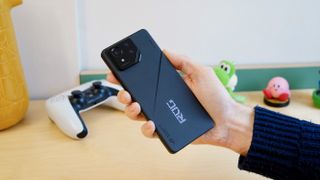
Specifications
Reasons to buy
Reasons to avoid
✅ You want a gaming phone that doesn't scream: The Asus ROG Phone 8 Pro is a serious gaming phone, but unlike the last few ROG Phone models, this one won't scream to the world that you wish you had a spaceship
✅ You want more than a gaming phone: Usually you have to skip features like wireless charging, or IP68 water resistance, when you choose a gaming phone. Not with the ROG Phone 8 Pro.
✅ You want to play games all day: Sure there are other Snapdragon 8 Gen 3 phones, but few with this much RAM, and none with better cooling, so the ROG Phone 8 Pro is made to keep pushing faster and faster.
❌ Your want a cheap gaming phone: The ROG Phone 8 Pro is packed with features, and features don't come cheap. You can find similar performance cheaper without all the niceties.
❌ You want a thin phone: With great cooling inside and a huge battery, you know the ROG Phone 8 Pro is going to be a thick phone when you buy it. If you need thinner, you'll have to make sacrifices.
❌ You want a phone that lasts year: Only two years of Android updates? Come on, Asus, Samsung and Google are offering up to seven years on phones this expensive. Time to step up.
📱 The Asus ROG Phone 8 Pro is a great gaming phone with blazing performance like you'd expect, but it's also a great phone all around, something we couldn't say about previous hardcore gaming phones. The cameras are better, water resistance is a huge addition, and it looks stylish. Plus, it has great battery life. ★★★★
The ROG Phone 8 Pro is a gaming phone all grown up. It's a gamer dressed for a corporate job. It still has some fancy lights, and it can burn the competition in any benchmark or multiplayer game, but it won't stand out in a meeting and make everyone thing you aren't mature enough to send a work email.
Design: The ROG Phone 8 Pro is understated and classy, whereas the past ROG Phone models have looked positively intergalactic. Instead of a multi-color display, the ROG Phone 8 Pro gets a white LED display that flashes fancy patterns. We especially love that this model is IP68 water resistant for added durability.
Display: The ROG Phone 8 Pro can refresh its display up to 165Hz, which may be faster than any game can draw frames. It relaxes on the resolution, but gamers know that it's all about smoothness and framerates, and that's where the ROG Phone 8 Pro excels. Oh, and it's incredibly bright, in case you accidentally find yourself outside.
Camera: The cameras on past Asus ROG phones were an afterthought, but with bigger sensors and even a unique gimbal stabilization system, the ROG Phone 8 Pro delivers respectable photo and video recording capabilities.
Performance: Of course the ROG Phone 8 Pro wouldn't be our top gaming phone if it didn't deliver the top performance, and there's no phone that will beat you if you're carrying this monster in your pocket. With the Aero Active cooler attached, it can deliver top performance even longer, though the Red Magic 9 Pro did offer better sustained driving at top speeds, thanks to slightly better cooling.
Battery life: To add style the ROG Phone 8 Pro drops a little battery weight, and this is a sad omission for gaming fans. Last year's ROG Phone had a battery that was larger, and the Nubia Red Magic 9 Pro is bigger still, at 6,500mAh, versus the 5,500mAh on the ROG Phone. Ahh well, you'll just have to charge this one more.
Value for money: Yeah right, you don't buy a Ferrari because it's a great value, and you don't buy a ROG Phone because it's cheap. You buy it because it's the fastest phone around, and you can't put a price on being the fastest.
Read our full Asus ROG Phone 8 Pro review
| Attributes | Notes | Rating |
|---|---|---|
| Value | The ROG Phone 8 Pro is not a cheap phone by any stretch, but as a top-level gaming phone that also mixes it with flagship phones, it’s a unique proposition. | 4 / 5 |
| Design | Asus has brought the ROG Phone design on leaps and bounds. It’s still not subtle, but it’s more practical and less overtly ‘gamery’. | 4.5 / 5 |
| Display | Big, bright, responsive, and color-accurate, though now also interrupted by a punch-hole cut-out. | 4.5 / 5 |
| Camera | The first gaming phone with a genuinely decent (if still not top tier) all-round camera system, complete with dedicated telephoto. | 4 / 5 |
| Performance | One of the fastest phones on the market right now, with a surfeit of RAM and strong cooling. | 5 / 5 |
| Software | Relatively solid and uncluttered, with options to get closer to stock if you wish. Only two years of updates promised, though. | 4 / 5 |
| Battery | A slight step back in capacity and stamina from its predecessor and closest gaming phone rival, but still a strong performer. | 4.5 / 5 |
The best looking phone
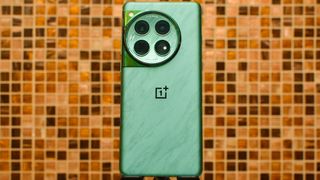
Specifications
Reasons to buy
Reasons to avoid
✅ You want a phone that looks cool: Are you bored with metal slabs? So is OnePlus, and the OnePlus 12 in either emerald green or a sparkly black finish will stand out from the crowd in the best way.
✅ You need long battery in a hurry: The OnePlus 12 doesn't just have better battery life than the competition, it also charges faster. It even comes with a fast charger in the box, a rarity these days.
✅ You want to spend less and get more: Smartphone prices are climbing through the roof. The OnePlus 12 gives you almost everything that makes those other flagships standout, at a great price with trade-in deals to boot.
❌ You want tons of new features: OnePlus skipped AI features on its latest phones, while Samsung and Google keep piling them on. If you want generative AI, look elsewhere.
❌ You want to use this phone for seven years: OnePlus offers years of updates, but not as much as Google and Samsung offer. Plus, Pixel and Galaxy phones are IP68 rated for added durability.
❌ You need zoom cameras and more: The OnePlus 12 takes great photos ... sometimes. Depending on the light and the subject, you might get an artistic shot, but if you want real versatility and zoom, try a Galaxy phone.
📱 The OnePlus 12 is a love letter to OnePlus fans, with everything you want in a flagship killer. It offers amazing performance, one of the best displays around, and cameras that hold their own against the premiere flagships, all for a lower price. You lose a few features, but real fans know what matters, and the OnePlus 12 has all of that. ★★★★
The OnePlus 12 returns to the OnePlus roots as a flagship killer. This is a phone with excellent performance and the important features to challenge the expensive, premiere flagship phones, at a lower price.
Design: I wish it were more durable, but I can't ask for the OnePlus 12 to be more beautiful, because it's truly a stunning phone that stands out from the pack the way formal attire stands out from a crowd in cocktail dress.
Display: OnePlus 12 takes on the best phones you can buy with a big, bright screen that is super-sharp, even more sharp than the iPhone 15 Pro Max. It even keeps the curve that Samsung abandoned, and it looks all the better for it.
Camera: With Hasseblad branding and color tuning, the OnePlus 12 delivers shots that look great if you're taking portraits and selfies. The zoom lens is disappointing, and sometimes colors can be thrown off, but when it works, these photos will look even better than what your friends are taking on Galaxy and iPhone cameras.
Performance: You can't ask for better performance than the Snapdragon 8 Gen 3 in the OnePlus 12, with plenty of RAM on board as well. Maybe it's the lack of AI features that helps the OnePlus 12 run snappy and smooth, but we had a great time playing games and getting things done on this phone.
Battery life: The OnePlus 12 has a huge battery inside, and OnePlus has clearly done a lot of work behind the scenes making this phone run efficiently. We got some of best battery life we've seen from this phone, and it easily beats the iPhone 15 Pro Max for active screen time.
Value for money: The OnePlus 12 is a great value, as long as you take care of it. The lack of durability has me worried for folks who keep this long term, but if you care for it, this phone will deliver tons of value and performance for years.
Read our full OnePlus 12 review
| Attributes | Notes | Rating |
|---|---|---|
| Value | The OnePlus 12 is built to take on phones that cost hundreds more, so it's a great value, especially against phones in the same price range. | 5 / 5 |
| Design | This is one of the coolest-looking phones I've ever used, especially in the Flowy Emerald finish. I still wish it could take a dunk underwater. | 4.5 / 5 |
| Display | The OnePlus 12 can reach brightness levels that are potentially harmful, and it's also plenty sharp and colorful to compete with the best. | 5 / 5 |
| Software | OnePlus takes a light touch, but Android can't come close to Apple's iOS, and OnePlus is lagging far behind in years of support these days. | 3 / 5 |
| Camera | A very stylish camera that excels in portraits and selfies, but can't match the versatility and zoom of the best camera phones. | 3 / 5 |
| Performance | Stellar performance, especially compared to other phones at this price, push the OnePlus 12 ahead, and we even appreciate the lack of AI features ... for now. | 4 / 5 |
| Battery | Amazing battery life beats the best phones you'd consider, and it also charges faster, whether wired or wireless. | 5 / 5 |
FAQs
What is the best phone in 2024?
The best premium smartphone is the iPhone 15 Pro Max for iPhone fans and the Galaxy S24 Plus for Android fans. Those phones do everything you might possibly need a phone to do, with excellent performance and battery life. Most people don't need premium performance, so the best iPhone for most people is the iPhone 15, and the best Android for most people is the Google Pixel 8.
How do I choose the best phone?
The first thing you need to decide when buying a new smartphone is how much you want to spend. The smartphone market varies dramatically, from very high-end handsets that cost well over four-figures, to much cheaper phones that can be found for only a few hundred. We have options on our list at both ends of the price spectrum.
Once you've decided how much you want to spend, you should decide whether you want to try one of the best Android phones or go for one of the best iPhones. Often, the platform decision has more to do with your work, your friends and family and what they use to share photos and messages, and what sort of computer or devices you already own.
If you're looking for something outside the norm, we have plenty of unique options, as well. There are phones with a built-in pen for writing, and phones that fold in half to be more compact. There are large phones, small phones, and Max-sized phones. We have phones with space-level zoom, and phones that specialize in touching portraits.
No matter what phone you choose, you can be sure that we've thoroughly tested and vetted every phone on this list, and we know you'll be satisfied with any of these devices in your pocket.
How we test
We've only included phones on this list that we've thoroughly tested, and our testing regiment is deep and detailed. We test every aspect of a phone that you might use from day-to-day, then we dive deeper to discover all of the hidden features.
We test phones for battery life and charging, speed and performance, and especially for camera capabilities. We make sure that phones deliver on their manufacturer's promise. If it says a phone can charge in 30 minutes, we break out the stopwatch.
We've seen every phone around, so we have a good idea of how each model stacks up to one another. We use both iPhone and Android, from the most expensive models to the most affordable, so we know what you're getting, no matter what you pay. We make sure the phones deliver what we'd expect for the cost.
Once we're done, we don't stop. We keep updating our reviews as we learn more, and as the phones are updated. Our reviews are always fresh, so check back before you buy to make sure you're getting the latest opinion on the best phones you can buy.
Get daily insight, inspiration and deals in your inbox
Get the hottest deals available in your inbox plus news, reviews, opinion, analysis and more from the TechRadar team.

Phil Berne is a preeminent voice in consumer electronics reviews, having reviewed his first device (the Sony D-EJ01 Discman) more than 20 years ago for eTown.com. He has been writing about phones and mobile technology, since before the iPhone, for a variety of sites including PCMag, infoSync, PhoneScoop, and Slashgear. He holds an M.A. in Cultural Theory from Carnegie Mellon University.
Phil was the internal reviewer for Samsung Mobile, writing opinions and review predictions about top secret new devices months before launch. He left in 2017. He worked at an Apple Store near Boston, MA, at the height of iPod popularity. He has been a High School English teacher at Title I schools, and is a certified Lifeguard. His passion is smartphones and wearables, and he is sure that the next big thing will be phones we wear on our faces.


